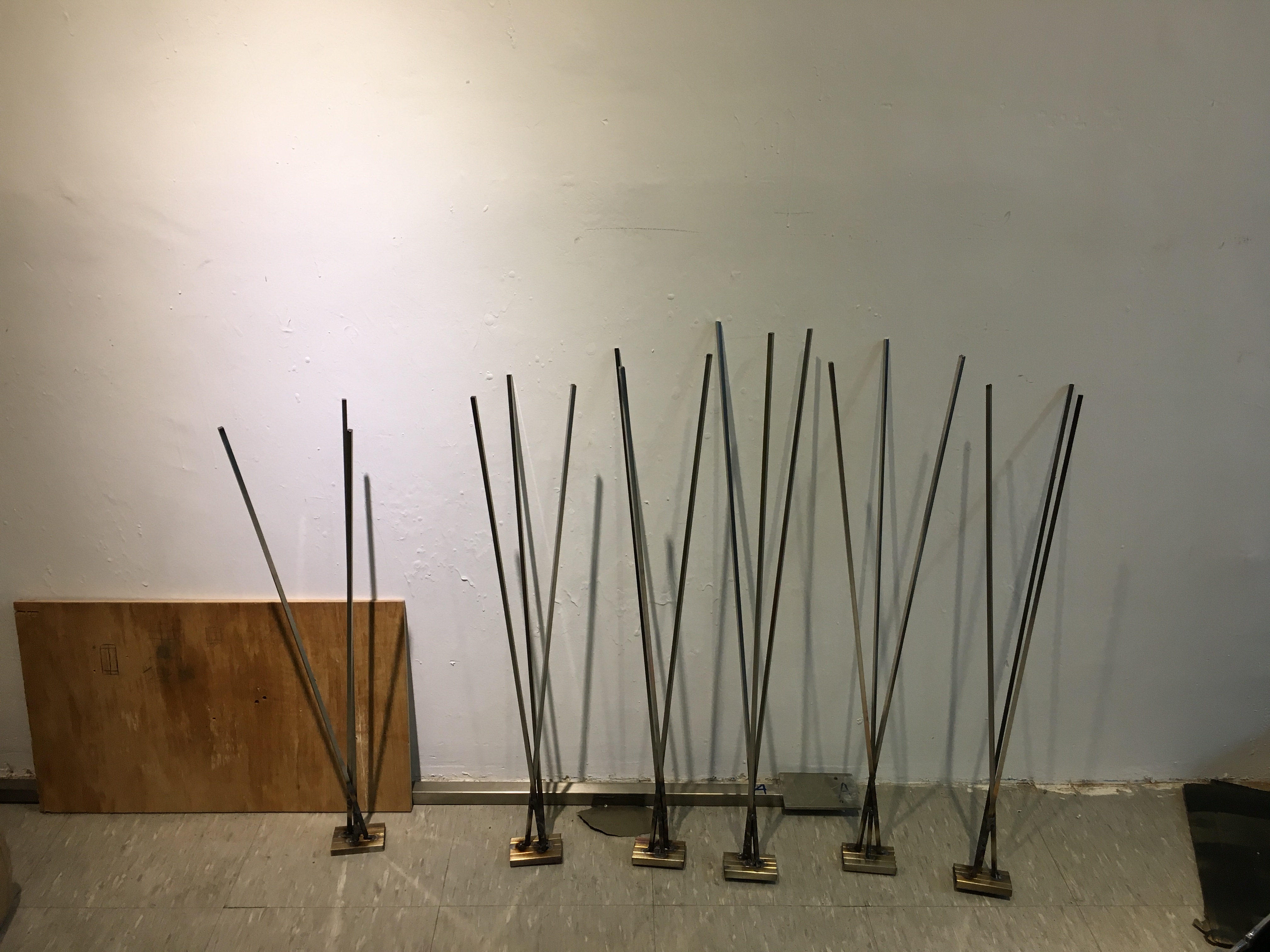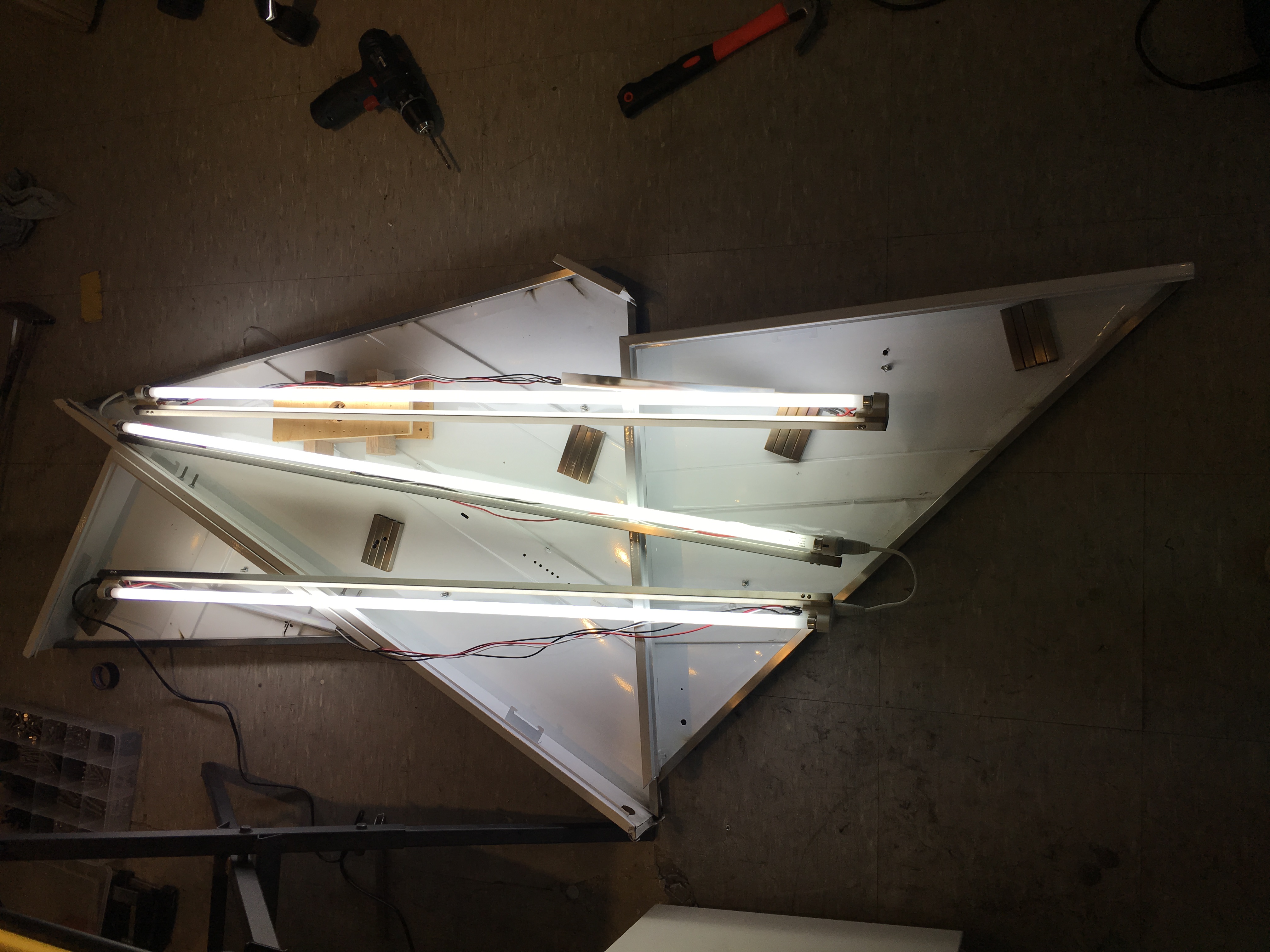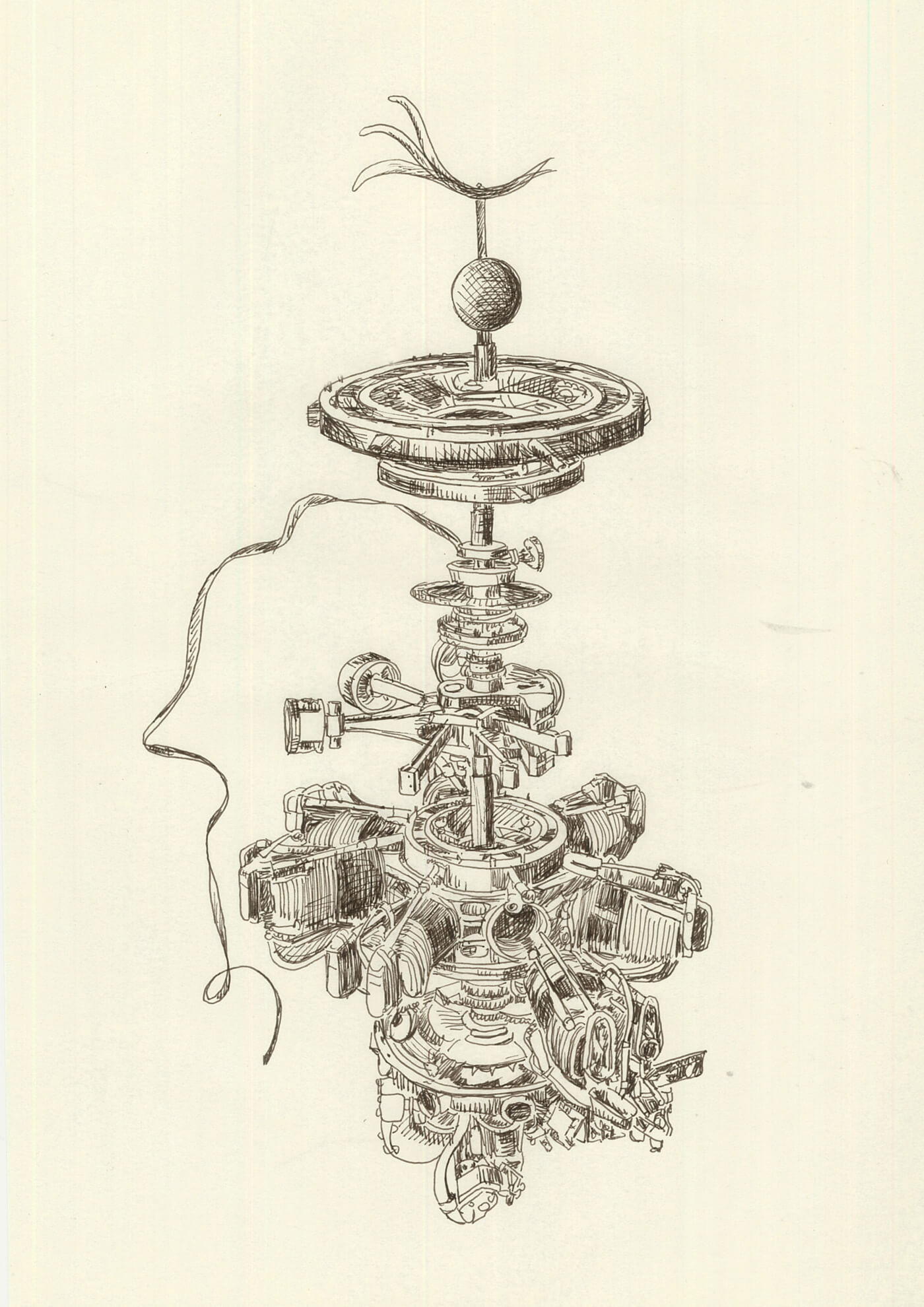Technical Infomation
Year of Completion | 2018 |
Dimension | 2m * 1m * 1m |
Hardware Materials | Stainless Steel, Disassembled Laptop Monitors, Custom Electronics, Disassembled Ceiling Lamp, Florecent lights, Computer |
Software | Unity |
Commission work for exhibition ALGORITHMIC ART: SHUFFLING SPACE AND TIME, City Hall, Hong Kong Topics: Cybernetics 控制論 / kinetic machine 動力學機器 / OpenWorm Project codes 開放蠕蟲項目代碼 Synopsis The machine conceptualized by Cedric Maridet (initial concept), Angela Su (concept, sketch artist), and Kenny Wong (concept, machine-builder) is inspired by Chang Shi-kuo’s sci-fi story「豈有此理」(literally, “How could that have been possible!”) in which a transparent genetically engineered worm is transformed into a human being. The fictional worm has much in common with C. elegans, a transparent nematode (roundworm) which has been intensively studied since 1963 in the areas of neuronal development, and molecular and developmental biology. It was the first multicellular organism to have its entire genome sequenced, and is the only organism to have its connectome (neuronal “wiring diagram”) completed. C.elegans is extensively used as a model organism, especially in the field of Whole Brain Emulation. The OpenWorm project (started 2011) has built the first artificial life, a biologically-realistic emulation, modeled after the behavior and physical structure of C. elegans. The ultimate goal of the research is to understand how the human brain works and eventually to emulate it. Project C. sublimusexplores the possibility of creating a ‘technologically sublime’ being from C. elegans. It is hypothesized that the unique qualities of the worm enable the transformation of its physical form through mutations triggered by nanobots. Its neurological pathways can also be manipulated or trained to become a sentient being. “You have evolved from worm to man, but much within you is still worm.” ― Friedrich Nietzsche, Thus Spoke Zarathustra 簡介 此機器的概念來自Cedric Maridet (最初概念)、 徐世琪 (概念,草圖,藝術家)和黃智銓 (概念,機器設計及製作,藝術家)。作品受到張系國科幻小說《豈有此理》啟發,故事中透明基因改造蠕蟲被轉化成人類。 這個虛構的蠕蟲與秀麗隱桿線蟲 (C. elegans)有很多共同之處。C. elegans 是一種由1963年開始於神經元發展以及分子和發育生物學範疇被廣泛研究的透明線蟲動物門 (圓蟲)。它是第一種完成全基因組測序的多細胞真核生物,並且是至今唯一完成其連接組(神經元“接線圖”)的生物體。 C.elegans 是研究領域中很常用的一種模式生物,尤其在全腦仿真研究上。開放蠕蟲項目 ( the OpenWorm project,始於2011年) 建立了第一個人造生命體-一個C. elegans的行為和物理結構的完全仿體,即生物學上的仿真。 該研究的終極目標是了解人類大腦的運作模式並最終模仿大腦。 本作品將探索從 C. elegans. 創造出「科技上崇高」的生命體的可能性,並假設了蠕蟲的獨有性質能夠透過由納米機器觸發的變種轉化其物理形態,其神經通路也將可以被操控或訓練而最終成為一個有感知能力的生命體。 「你們從蟲進化到人,但你們內心裡大底上還是蟲。」 — 弗里德里希·尼采,《查拉圖斯特拉如是說》
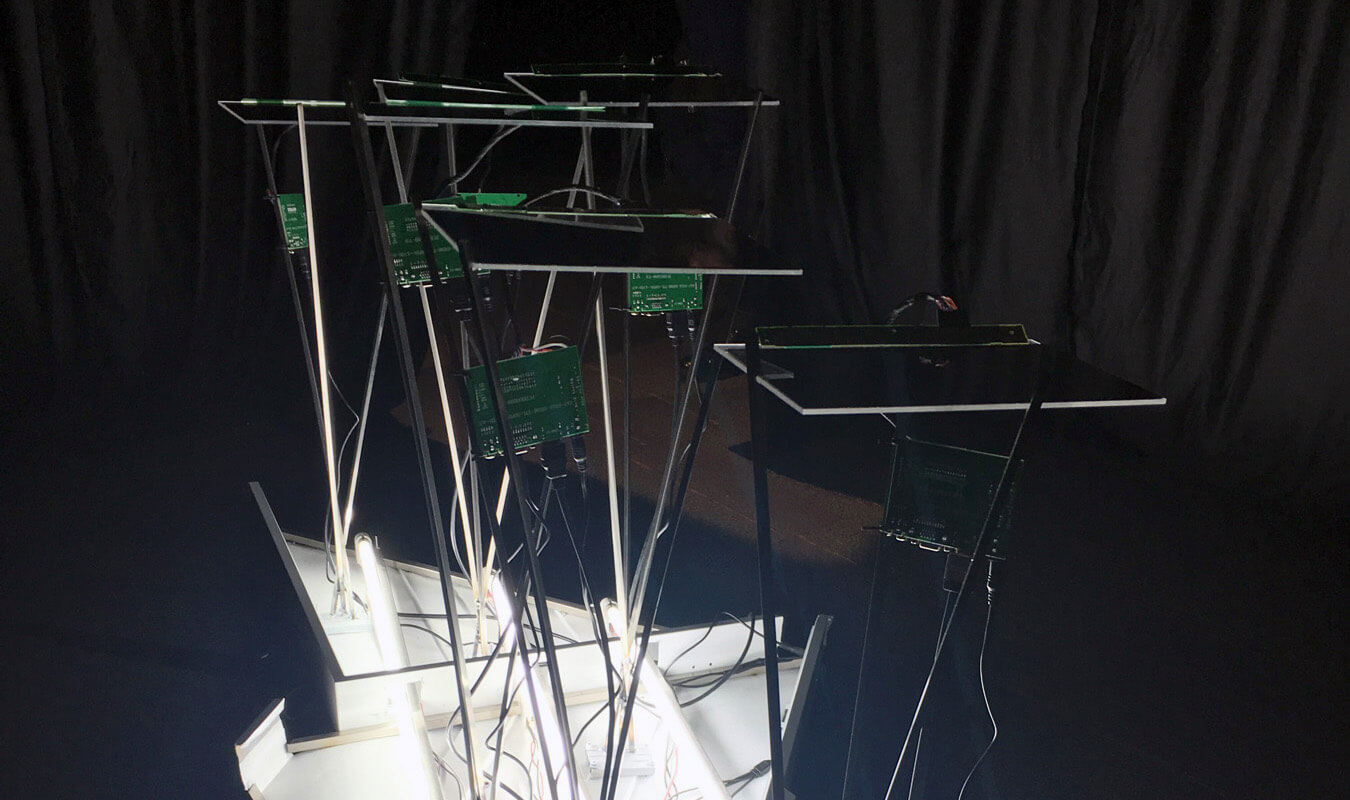
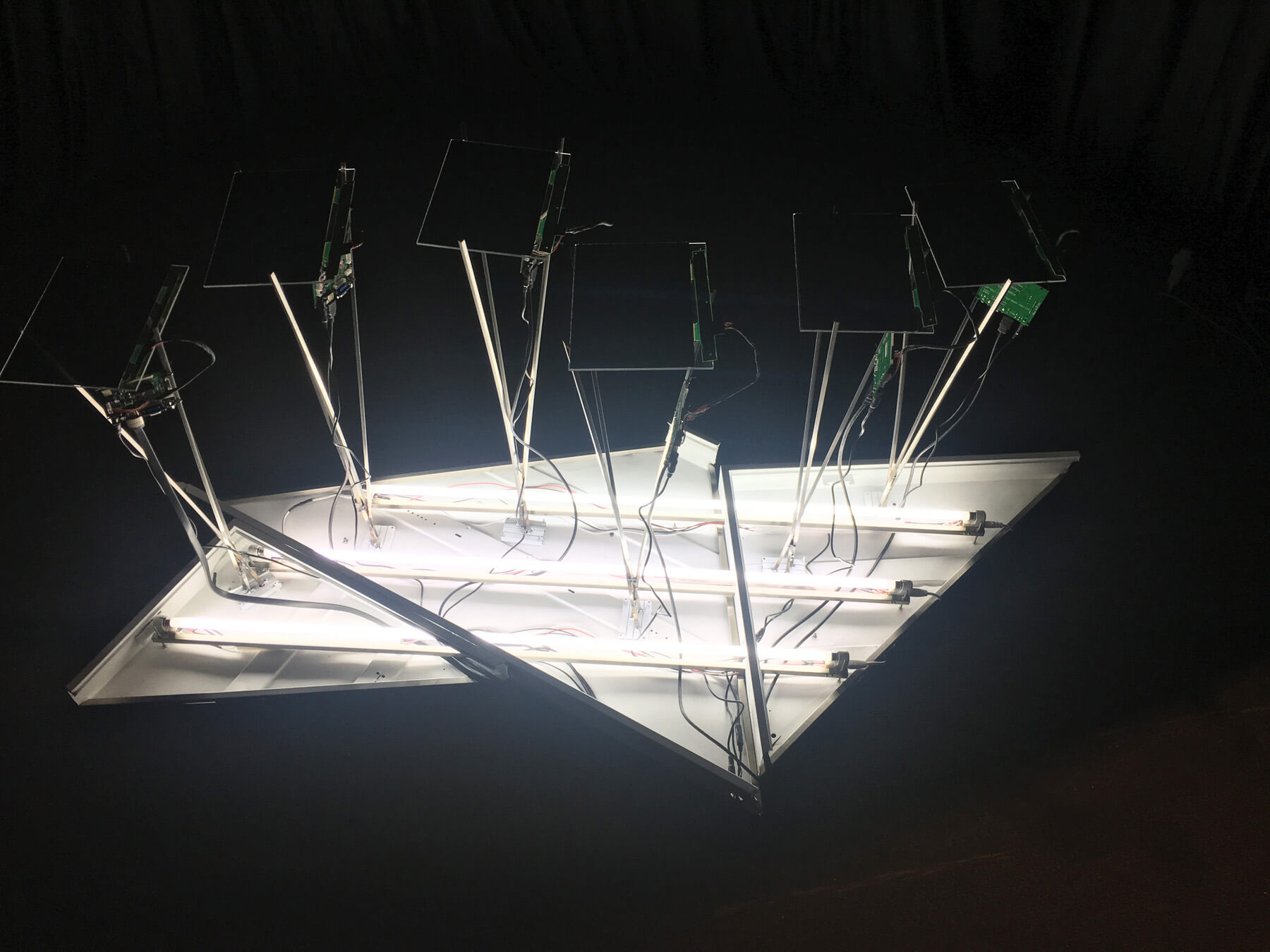
Concept Chang Shi-kuo’s Original Story and Machine “How could that have been possible!” is a story about two scientists, Dr Wang and Dr Kuo. Kuo focuses on developing genetically engineered ‘worms’ to perform assigned tasks. One of these worms is described as shapeless and transparent, with a malleable body shape that can be manipulated by the application of strong magnetic fields. On the other hand, Wang focuses on inventing a machine that recreates historical figures by shaping their memories from information gathered from historical documents. He postulates that it is possible to recreate a human being through traces that they leave behind (which is indeed feasible today as our photos, speech and thoughts have become retrievable data in social media platforms). Wang eventually transforms these worms into historical figures. What attracts us in the story are the transparent worms and the idea of a technological sublime being. Our initial idea of the machine includes the following: a physical machine that transforms the worm into a different being; an individual biological system (the worm C. elegans or the resulting being C. sublimus) as an organic and/or biomechatronic machine; and the generative feedback system between the worm and its environment as machine. The Worm The fictional worm is found to have much in common with Caenorhabditis elegans, a transparent nematode (roundworm), about 1 mm in length. The worm has been intensively studied since 1963 in the area of neuronal development, molecular and developmental biology. It was the first multicellular organism to have its whole genome sequenced, and as of 2012, it is the only organism to have its connectome (neuronal “wiring diagram”) mapped. Today, C. elegans is extensively used as a model organism, especially in the field of Whole Brain Emulation. The OpenWorm project, the open source scientific project which began in 2011, has successfully built the first artificial life, a biologically-realistic emulation of the worm modeled after genome and the connectome (physical structure and behaviour) of C. elegans. The ultimate goal of the research project is to understand how the human brain works and to emulate this complex and mysterious organ. The brainwaves of C. elegans have also been uploaded to a Lego robot, and some postulate that human brain waves could one day be uploaded to any physical computing platform, be it a coffee cup, a coat of paint on the wall, a tree, or a fly, in order to achieve the ‘ultimate freedom’ which is not bound by the physical body. The Transformation The process of transformation from the worm C. elegans to a new technological being C. sublimus is developed from the three unique qualities of the worm: Transparent Body: The transparent body of the worm facilitates not only the observation of the organism’s body structures and organs, but also the study of mutation and transformation. Mapped Genome: All 19,000 genes and their corresponding protein expressions are mapped. elegans with its short life-cycle is amenable to genetic analysis. The worm’s protein and gene expressions, that are manifested in its physical body and behavior (learning, memory and aging), can thus be manipulated. Mapped Connectome: All 302 neurons and 7000 synapses are also mapped. A fully simulated neural network, or brain functions, can be translated to platform-independent codes. The manipulated code will then be uploaded to different computing platforms or to the transformed body of the worm. These three qualities are the basis for the formation of C. sublimus’ physical body complete with brain functions and neural networks that govern the behavior of this technological sublime being. In the imaginary machine, the worm is subject to mutations triggered by nanobots and strong magnetic fields. A robotic device made from DNA can potentially seek out specific cell targets and deliver particular molecular instructions that alter the body structure of the worm. Nanobots will also replace certain neurons to alter the worm’s behaviors. In order to give C. sublimus the capacity for higher reasoning, foreign genetic codes, memories and knowledge will be injected into the organism by these devices. The beginning of consciousness is therefore a consequence of a string of these instructions and data. The final stage of transformation involves a generative feedback system, a training process for the new being on a neurological level. As the environment impacts the being’s body, the neurons learn from these impacts and alter muscle formations, which in turn determine the body shape and impact the environment. In other words, the environment is the expression of the activity of the neurons, just as the neurons reflect the action of the environment. The relation between neurons and the environment is one of reciprocal influence; the being shapes its environment according to its own norms whilst simultaneously adapting to the environment’s ever changing demands. This adaptive feedback system is in a way a ‘machine’ that generates a flow of neurological information in different manifestations. The Machine The layers in this kinetic machine are our attempt to reveal and analyze the artificial life form C. sublimus, through the adaption of the OpenWorm Project codes used to emulate C. elegans.. We have extracted the codes and reveal the worm’s movement by the use of physical screens and mechanical parts. If the worm is a machine, we are opening up the black box of that machine. On another level, our machine is also part of the bigger machine that will eventually fully transform C. elegans to C. sublimus.



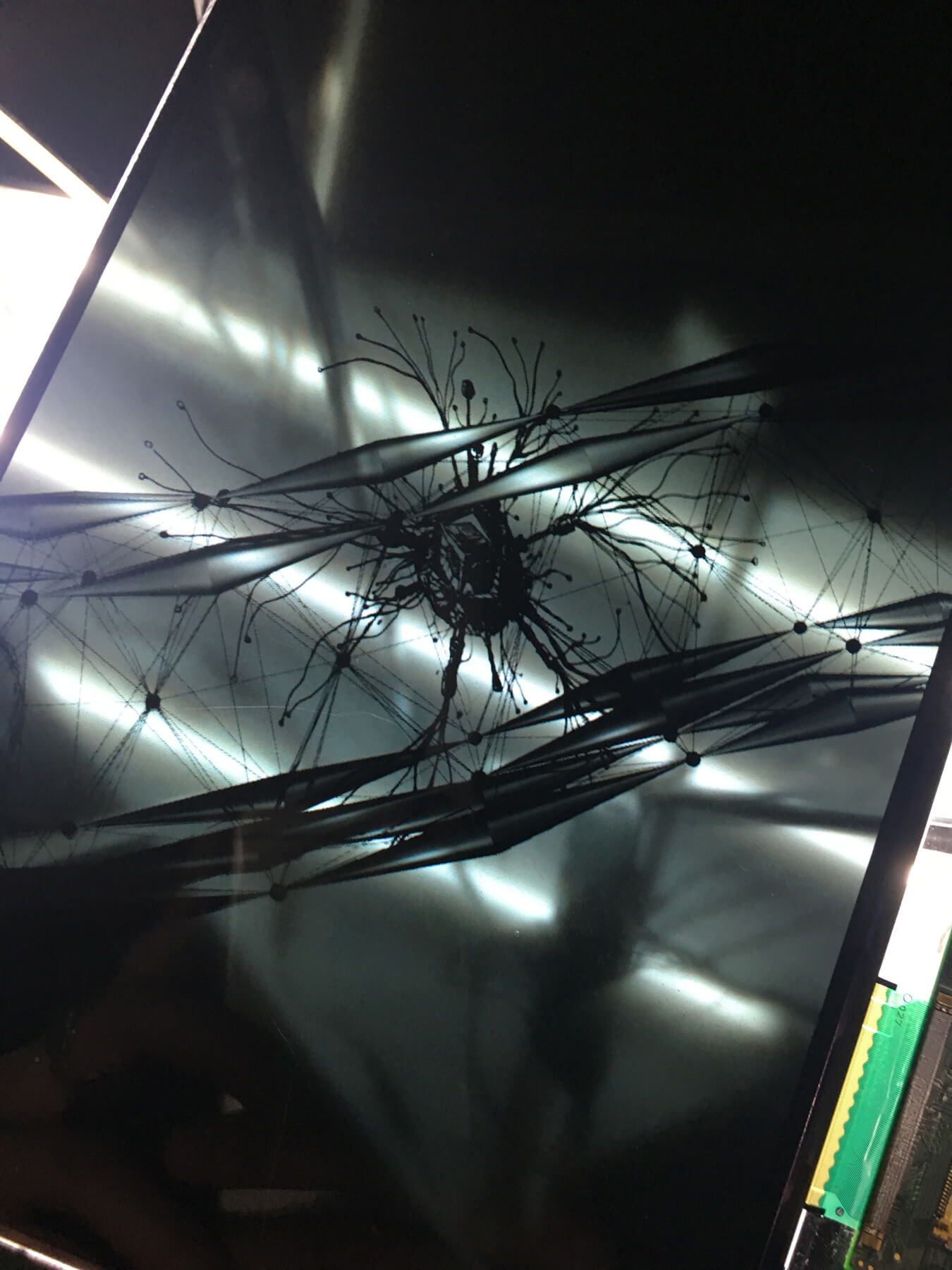

Craftmanship
Acknowledgment
Collaborator | ANGELA SU 徐世琪 - Artist KENNY WONG 黃智銓 - Artist CEDRIC MARIDET - Artist |
Special Thanks | Kaka Leung - Production Helper Kai Fung - Production Helper Shadow Lee - Production Helper Albert Wong - Production Helper |

